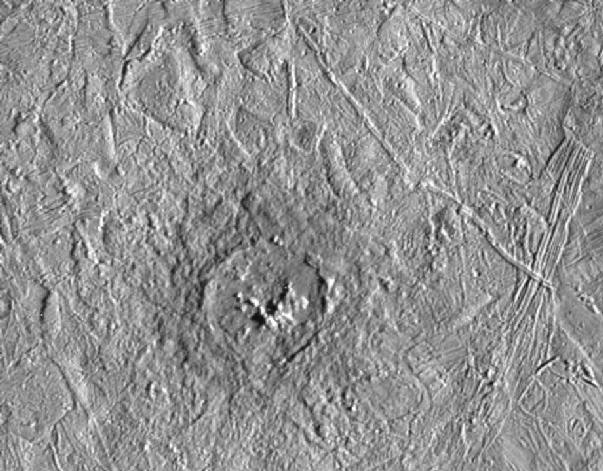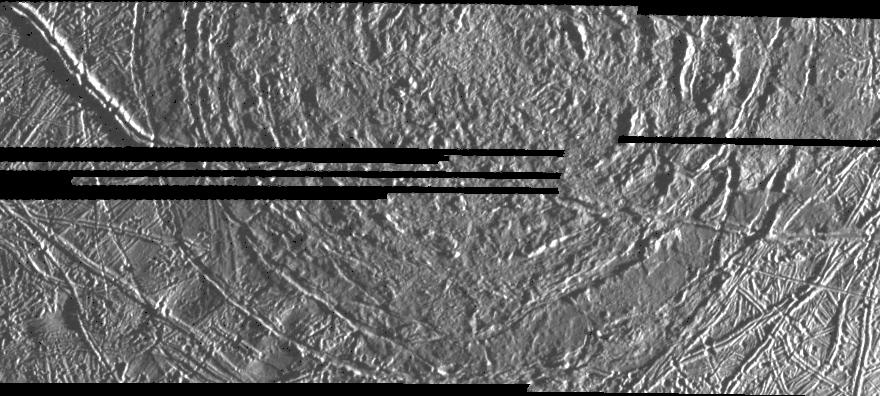
Crater Pwyll has a central peak and didn't break
through the ice, so the ice must be at least 3-4 km thick.

Note the flow-like features around the crater,
implying melting (maybe just of surface ice)
which was likely an effect of the impact.
This macula might be the remnant of an impact
crater. The relaxation time is governed by
the properties of the material under the
surface (solid or liquid).

http://photojournal.jpl.nasa.gov